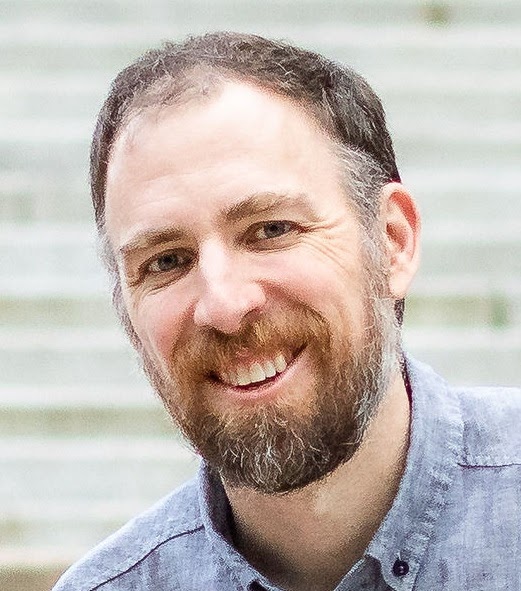Time for a just transition to a better world

Tom Guthrie, professor of anthropology at Guilford College.
COVID-19 and the murders of George Floyd, Ahmaud Arbery, Breonna Taylor, Rayshard Brooks and too many others feel like a one–two punch that has knocked us off our feet. Some groups have been more battered than others. The virus and the police literally stop African Americans from breathing.
Not long ago, our national attention focused on another pandemic: sexual violence against women. The immigration crisis was acute. Climate change loomed.
These calamities are earthquakes shaking the foundation of our society. Their accumulation can leave us feeling off balance and overwhelmed.
To make matters worse, there were signs that the United States was already unhealthy: economic inequality, political dysfunction, widespread depression, anxiety and addiction.
Many people are now wondering: is this the end of the world as we know it?
The bad news is that the earthquakes are going to keep coming, and they’ll likely get worse and more frequent.
The good news is that we can recognize them as symptoms and diagnose their underlying cause. This is vital for restoring health.
The root of the problem
COVID-19, police violence, sexual assault, forced migration, climate change, poverty and poor health are all rooted in a social and economic order that is more than five centuries old. They grow out of a culture that values acquisition and individualism, fears difference and normalizes all forms of oppression (patriarchy, white supremacy and so on). This culture produces a colonial economy of extraction and exploitation.
This social and economic order has always benefited its creators—wealthy white men—who have claimed the right to dominate everyone else (including the natural world) and established governments to protect their interests. It has always excluded, suffocated and killed women, Black and brown people, and the poor. The disproportionate impact of COVID-19 on marginalized groups is but one example.
A just transition?
Although our systems continue to serve the interests of dominant groups, as they were designed to do, they’re beginning to break down. An unjust and unsustainable society cannot last forever. Pandemics, rising seas, violent storms, floods, droughts, fires and dwindling resources—all effects of industrialization—will bring industrial society to an end.
The question is not whether we will change but how. As Movement Generation puts it: “Transition is inevitable, justice is not.” The poor and people of color are suffering first and most from the climate crisis, though they are least responsible for it. This will continue unless we turn in a different direction.
We need a just transition to a new world.
Imagine a society built around humility, reverence and care for all living beings. Imagine that we have returned to living in right relation with one another and with our local ecosystems. All communities (human and non-human) are healthy. We prioritize the well-being of the vulnerable so that everyone can breathe and flourish. Our economies are localized, regenerative and resilient. Everyone has the capacity to meet their own basic needs, working cooperatively in community. We measure wealth in terms of relationships and knowledge, not things. We sequester more carbon than we emit. A politics of love, justice and self-determination prevails. As we search for new perspectives and solutions, we select leaders from groups who were once marginalized.
How do we get there?
If this vision sounds utopian, that’s because many of us were led to believe that the dominant cultural and economic system is inevitable. It isn’t.
So how do we get there from here?
First, we (especially those of us who have benefitted from oppressive systems) must acknowledge, lament and repair the damage we have done to people and planet over the last five centuries. In my faith tradition, we call this confession and repentance. We must restore to exploited communities (human and non-human) what we have extracted from them so that healing can begin. The Equal Justice Initiative is a leader in this work.
Second, we need to open our imaginations wide enough to envision true alternatives. Artists and storytellers can help. We can learn from other cultures, especially Indigenous ones. Many religions are counter-cultural (though they’re susceptible to distortion). For example, horrific violence has been perpetrated in the name of Christ, but Jesus adhered to Judaism’s anti-imperial, liberationist politics and led a pacifist movement with love, justice and inclusion at its core.
Third, even as we continue to treat symptoms of problems, we must also focus on underlying causes and conditions. Otherwise, nothing will really change. A fine example of transformative thinking is the Movement for Black Lives’ response to police brutality.
Fourth, we must think and act systemically. There’s important work to do in all of our institutions and systems, so each of us can contribute meaningfully. It’s crucial that we connect our efforts, building coalitions of mutual support. “Climate Justice Is Racial Justice Is Gender Justice”—that was the title of a 2017 article in “Yes!” magazine (a great source of inspiration). Powerful examples of intersectional activism include the Poor People’s Campaign and the climate justice movement.
Finally, we’ll need both to dismantle the dominant systems and to build alternative ones. As we tear down statues of military men, might we use those sites to honor mothers, peacemakers, healers and laborers instead, or to sanctify the non-human world? As we block natural gas pipelines, let us also build low-energy communities. We can lobby against subsidies for industrial agriculture and redirect those funds to Black and brown people farming ecologically.
So is this the end of the world as we know it? I hope so. I don’t want to go back to “normal.”
It is time to transition from a culture of death to a culture of life.
“Another world is not only possible,” wrote Arundhati Roy, “she is on her way. On a quiet day I can hear her breathing.”






Tom Guthrie • Oct 2, 2020 at 9:09 pm
Here are some links:
Movement Generation: https://movementgeneration.org/transition-is-inevitable-justice-is-not-a-critical-framework-for-just-recovery/
Equal Justice Initiative: https://eji.org/
Movement for Black Lives Breathe Act: https://breatheact.org/
“Climate Justice Is Racial Justice Is Gender Justice”: https://www.yesmagazine.org/issue/just-transition/2017/08/18/climate-justice-is-racial-justice-is-gender-justice/
Poor People’s Campaign: https://www.poorpeoplescampaign.org/
Climate Justice Alliance: https://climatejusticealliance.org/